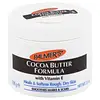What's inside
What's inside
 Key Ingredients
Key Ingredients

 Benefits
Benefits

 Concerns
Concerns

 Ingredients Side-by-side
Ingredients Side-by-side

Water
Skin ConditioningGlycerin
HumectantDimethicone
EmollientPropanediol
SolventSqualane
EmollientButylene Glycol
HumectantHydroxyethyl Acrylate/Sodium Acryloyldimethyl Taurate Copolymer
Emulsion StabilisingNiacinamide
SmoothingRubus Idaeus Seed Oil
EmollientLactobacillus Ferment
Skin ConditioningPhenoxyethanol
PreservativePolyacrylate Crosspolymer-6
Emulsion StabilisingPentylene Glycol
Skin ConditioningCaprylic/Capric Triglyceride
MaskingEthylhexylglycerin
Skin ConditioningLinum Usitatissimum Seed Extract
PerfumingTetrasodium Glutamate Diacetate
Mannose
HumectantSodium Mannose Phosphate
HumectantCeramide NP
Skin ConditioningAllantoin
Skin ConditioningAloe Barbadensis Leaf
MaskingBisabolol
MaskingRetinol
Skin ConditioningPolysorbate 20
EmulsifyingLecithin
EmollientPolysorbate 60
EmulsifyingSorbitan Isostearate
EmulsifyingChlorella Vulgaris Extract
Skin ConditioningHydrogenated Phosphatidylcholine
EmulsifyingLysolecithin
EmulsifyingRetinyl Linoleate
Skin ConditioningHydroxyphenyl Propamidobenzoic Acid
Skin ConditioningCetyl Palmitate
EmollientLaureth-23
CleansingSodium Hyaluronate Crosspolymer
HumectantTocopheryl Acetate
AntioxidantGlyceryl Caprylate
EmollientP-Anisic Acid
MaskingGlycine Soja Oil
EmollientSodium Hydroxide
BufferingSodium Hyaluronate
HumectantThioctic Acid
AntioxidantTrideceth-6 Phosphate
EmulsifyingSodium Acetylated Hyaluronate
HumectantUbiquinone
AntioxidantTocopherol
AntioxidantCitric Acid
BufferingHyaluronic Acid
HumectantHydrolyzed Glycosaminoglycans
HumectantHydrolyzed Sodium Hyaluronate
Skin Conditioning1,2-Hexanediol
Skin ConditioningLactic Acid
BufferingSodium Benzoate
MaskingAscorbyl Palmitate
AntioxidantPotassium Sorbate
PreservativeHydrolyzed Hyaluronic Acid
HumectantBeta-Carotene
Skin ConditioningDaucus Carota Sativa Root Extract
Skin ConditioningPhytic Acid
Caprylhydroxamic Acid
Beta-Sitosterol
Emulsion StabilisingSqualene
EmollientArginine/Lysine Polypeptide
Skin ConditioningWater, Glycerin, Dimethicone, Propanediol, Squalane, Butylene Glycol, Hydroxyethyl Acrylate/Sodium Acryloyldimethyl Taurate Copolymer, Niacinamide, Rubus Idaeus Seed Oil, Lactobacillus Ferment, Phenoxyethanol, Polyacrylate Crosspolymer-6, Pentylene Glycol, Caprylic/Capric Triglyceride, Ethylhexylglycerin, Linum Usitatissimum Seed Extract, Tetrasodium Glutamate Diacetate, Mannose, Sodium Mannose Phosphate, Ceramide NP, Allantoin, Aloe Barbadensis Leaf, Bisabolol, Retinol, Polysorbate 20, Lecithin, Polysorbate 60, Sorbitan Isostearate, Chlorella Vulgaris Extract, Hydrogenated Phosphatidylcholine, Lysolecithin, Retinyl Linoleate, Hydroxyphenyl Propamidobenzoic Acid, Cetyl Palmitate, Laureth-23, Sodium Hyaluronate Crosspolymer, Tocopheryl Acetate, Glyceryl Caprylate, P-Anisic Acid, Glycine Soja Oil, Sodium Hydroxide, Sodium Hyaluronate, Thioctic Acid, Trideceth-6 Phosphate, Sodium Acetylated Hyaluronate, Ubiquinone, Tocopherol, Citric Acid, Hyaluronic Acid, Hydrolyzed Glycosaminoglycans, Hydrolyzed Sodium Hyaluronate, 1,2-Hexanediol, Lactic Acid, Sodium Benzoate, Ascorbyl Palmitate, Potassium Sorbate, Hydrolyzed Hyaluronic Acid, Beta-Carotene, Daucus Carota Sativa Root Extract, Phytic Acid, Caprylhydroxamic Acid, Beta-Sitosterol, Squalene, Arginine/Lysine Polypeptide
 Reviews
Reviews

Ingredients Explained
These ingredients are found in both products.
Ingredients higher up in an ingredient list are typically present in a larger amount.
Dimethicone is a type of synthetic silicone created from natural materials such as quartz.
What it does:
Dimethicone comes in different viscosities:
Depending on the viscosity, dimethicone has different properties.
Ingredients lists don't always show which type is used, so we recommend reaching out to the brand if you have questions about the viscosity.
This ingredient is unlikely to cause irritation because it does not get absorbed into skin. However, people with silicone allergies should be careful about using this ingredient.
Note: Dimethicone may contribute to pilling. This is because it is not oil or water soluble, so pilling may occur when layered with products. When mixed with heavy oils in a formula, the outcome is also quite greasy.
Learn more about DimethiconeTocopherol (also known as Vitamin E) is a common antioxidant used to help protect the skin from free-radicals and strengthen the skin barrier. It's also fat soluble - this means our skin is great at absorbing it.
Vitamin E also helps keep your natural skin lipids healthy. Your lipid skin barrier naturally consists of lipids, ceramides, and fatty acids. Vitamin E offers extra protection for your skin’s lipid barrier, keeping your skin healthy and nourished.
Another benefit is a bit of UV protection. Vitamin E helps reduce the damage caused by UVB rays. (It should not replace your sunscreen). Combining it with Vitamin C can decrease sunburned cells and hyperpigmentation after UV exposure.
You might have noticed Vitamin E + C often paired together. This is because it is great at stabilizing Vitamin C. Using the two together helps increase the effectiveness of both ingredients.
There are often claims that Vitamin E can reduce/prevent scarring, but these claims haven't been confirmed by scientific research.
Learn more about Tocopherol